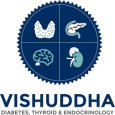Pregnancy brings about many changes in a woman’s body. For some women, these changes can also trigger the development of gestational diabetes while pregnant. Gestational diabetes is a type of diabetes that develops during pregnancy and usually disappears after giving birth. However, it can have serious consequences for both mother and baby if not properly managed. This article discusses gestational diabetes in depth, including its causes, symptoms, screening and diagnosis, treatment options, and long-term health risks.
What is Gestational Diabetes?
Gestational diabetes is defined as elevated blood sugar levels that are first detected or observed during pregnancy. This occurs when the hormones produced during pregnancy interfere with the body’s ability to use insulin effectively. Insulin is a hormone produced by the pancreas that allows body cells to use sugar (glucose) from carbohydrates in food for energy in a woman who does not have diabetes, the body becomes insulin resistant due to excess hormones that occur during pregnancy.
The pancreas usually responds by producing more insulin to overcome this resistance. However, in some women, the pancreas cannot cope with the increased demand, causing blood sugar levels to rise. This condition is called gestational diabetes.
Normally, hormone levels peak between 24-28 weeks of pregnancy. However, it can also grow earlier or later in pregnancy. Blood sugar levels while pregnant and after delivery are usually normal. However, women who have had gestational diabetes have an increased risk of developing type 2 diabetes later.
What are the Causes of Gestational Diabetes?
The exact causes of gestational diabetes are not fully understood, but several factors are believed to play a role:
- Pregnancy hormones: Hormones produced by the placenta during pregnancy, such as progesterone, interfere with the body’s ability to use insulin effectively. This insulin resistance increases as pregnancy progresses.
- Family history: Women who have a parent or sibling with type 1 diabetes or type 2 diabetes are more likely to develop gestational diabetes.
- Age: Older pregnant women, especially those over 25, are at higher risk.
- Weight: Being overweight or obese before pregnancy increases risk. Excess weight requires more insulin to keep blood sugar levels normal.
- Race/ethnicity: Native American, Hispanic/Latina, African American, Asian, and Pacific Islander women face higher risks.
- Polycystic ovary syndrome (PCOS): Women with PCOS already have some degree of insulin resistance and are more likely to develop gestational diabetes.
Some Common Signs and Symptoms of Diabetes
Here are some of the most common signs of diabetes while pregnant:
- Increased thirst – As blood sugar levels rise, the body produces more urine, causing dehydration and increased thirst. Pregnant women may feel excessively thirsty.
- Frequent urination – The kidneys work to flush out excess blood sugar through urine. Pregnant women with high blood sugar levels may notice needing to urinate often, including at night.
- Fatigue – When blood sugar is high, the body’s cells are not receiving adequate energy. This can cause tiredness and lack of energy during pregnancy.
- Hunger – The body tries to compensate for high blood sugar by producing more insulin to clear it from the bloodstream. This lowers blood sugar further and triggers hunger.
- Blurred vision – High blood sugar can pull fluid out of the lens of the eye, causing temporary vision changes. It is usually noticed upon standing up.
Screening and Diagnosis of Gestational Diabetes
All pregnant women are screened for gestational diabetes between 24-28 weeks of pregnancy. The screening involves a one-hour glucose challenge test where blood is drawn one hour after drinking a sugary drink. If the results are higher than normal, the woman will need to undergo a three-hour glucose tolerance test to confirm the diagnosis.
The three-hour test involves fasting overnight, then drinking another sugary drink and having blood drawn hourly over three hours. Gestational diabetes is diagnosed if two or more of the blood sugar readings during the test are abnormally high. The diagnosis requires further Diabetes testing and management by a healthcare provider.
Treatment for Gestational Diabetes
The main goals of treatment for gestational diabetes are to control blood sugar levels and minimize risks to both mother and baby. Treatment usually involves:
- Blood sugar monitoring: Checking blood sugar levels several times a day, especially before and after meals, to track fluctuations and determine needed treatment adjustments.
- Medical nutrition therapy: Meal planning with a registered dietitian to achieve proper nutrition and keep blood sugar stable. This often involves choosing healthy carbohydrates and controlling portion sizes.
- Physical activity: 30 minutes per day of moderate exercise like walking can help lower blood sugar and manage weight gain. Activities should be discussed with an obstetrician first.
- Medication: If diet and exercise are not enough to control blood sugar, insulin injections may be needed. Different insulin types and regimens can be used safely during pregnancy.
- Foetal monitoring: Non-stress tests and ultrasounds are done periodically to check foetal growth and health as gestational diabetes can increase the baby’s size.
With careful management, most women can keep their blood sugar levels within target ranges and reduce health risks for themselves and their babies. Treatment is aimed at preventing complications. After delivery, blood sugar levels usually return to normal, but women are still at higher risk for developing diabetes later in life.
What are the Risks of Gestational Diabetes for Mother and Baby?
If gestational diabetes is not well controlled through treatment, it can increase risks for both mother and developing baby. Some potential risks include:
For the mother:
- Preeclampsia – A dangerous condition involving high blood pressure during pregnancy.
- Caesarean delivery – Babies exposed to high blood sugar tend to grow larger, increasing C-section risks.
- Future diabetes – Up to 50% of women with gestational diabetes develop type 2 diabetes within 10-20 years postpartum.
For the Baby:
- Large birth weight (macrosomia) – Babies are at risk of weighing over 9 pounds at birth, increasing delivery difficulties.
- Low blood sugar after birth (hypoglycemia) – Babies may have low blood sugar levels due to high insulin exposure in the womb.
- Breathing problems – large babies have higher chances of shoulder dystocia and problems fitting through the birth canal.
- Jaundice – Excessive bilirubin levels are more common in large babies.
With proper management, many risks can be reduced significantly. Monitoring after delivery is also important for both mother and baby’s long-term health.
Lifestyle Changes to Prevent Gestational Diabetes
While gestational diabetes cannot always be prevented, certain lifestyle modifications may help lower risks, especially for women who have risk factors:
- Achieve and maintain a healthy pre-pregnancy weight through diet and exercise.
- Follow a balanced diet rich in whole grains, fruits, vegetables, lean proteins, and low-fat dairy.
- Engage in regular physical activity for at least 30 minutes per day on most days.
- Quit smoking and limit alcohol intake if planning pregnancy.
- Seek preconception counselling from your healthcare provider to address existing health conditions.
- Get adequate rest and manage stress levels through relaxation techniques.
- Consider a diabetic screening if you have a family history of diabetes before becoming pregnant.
With early screening, monitoring and treatment as needed, most women can have healthy pregnancies despite gestational diabetes. Following a lifestyle geared towards optimal health before and during pregnancy can help lower risks.
In summary, gestational diabetes while pregnant develops due to changes in hormones and insulin resistance. It is diagnosed through standardised screening tests between 24-28 weeks. Treatment focuses on blood sugar control through diet, exercise, medication, and foetal monitoring to reduce risks. If you want such adherence to treatment plans and monitoring you can contact Dr Moxit Shah, a renowned Endocrinologist in Ranchi who specializes in diagnosing and treating health conditions related to body hormones and different kinds of diabetes with treatment, most patients can achieve remission and prevent future hypoglycemic events through close medical follow-up and lifestyle modifications. With proper management, both mother and baby can achieve good outcomes.
FAQs
Yes, breastfeeding is encouraged, as it can help regulate the baby’s blood sugar levels and provide numerous health benefits.
What are the long-term effects of gestational diabetes on the mother?
Women with a history of gestational diabetes should have regular check-ups as they are at an increased risk of developing Type 2 diabetes and other health issues. Healthy lifestyle choices can mitigate these risks.
Can gestational diabetes go away after pregnancy?
In many cases, blood sugar levels return to normal after giving birth. However, there’s an increased risk of developing type 2 diabetes later in life.
How often should I monitor my blood sugar levels?
Your healthcare provider will give specific guidelines, but it typically involves regular monitoring, especially after meals.






